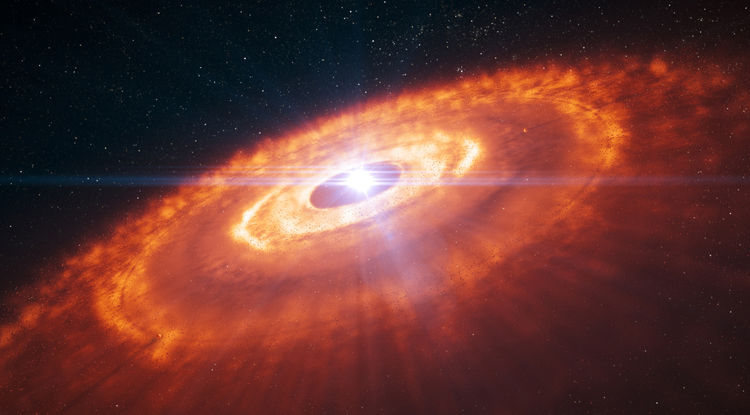A model originally proposed out of sheer curiosity by a theoretical astrophysicist might actually help astronomers understand the formation of the most common planets in the galaxy.
Six years ago, before arriving at the University of Arizona, Ruobing Dong was a graduate student at Princeton playing with theoretical models of disks of gas and dust swirling around newborn stars.
Disks such as these are composed of material that will eventually form planets. As planets collect material in their orbit, they grow and clear a gap in the disk. While the planets are not large enough for the astronomers to see directly, the gaps hint at their existence.
As theoretical astrophysicists often do, Dong changed the characteristics of the disk in his model just to see what happened.
He made it so that it was harder for the material in the disk to fight back against the gravitational kicks from the forming planet. This type of disk, where the material moves away from the planet more easily, has a low viscosity.
The result: Planets smaller than previously thought possible, called super-Earths (planets larger than Earth, but smaller than Neptune that are typically found close to stars), formed pairs of narrow rings in the disk, and they were forming farther out in the disk than expected.
“It wasn’t popular,” Dong said. But it was hypothetical. “We weren’t thinking that it was a realistic assumption.”
Dong finished his thesis and graduated. But between graduating from Princeton and arriving at the UA, two surprising things happened.
First, astronomers captured two high-resolution images of planet-forming disks with the Atacama Large Millimeter Array (ALMA) in Chile. Both images contained these strange, detailed features.
Second, evidence began to mount for disks with a lower viscosity than previously thought, like those modeled by Dong.
This got him thinking: “Can we put up a paper to produce synthetic observation to tell the astronomical community (the narrow gaps) might be telling you something you haven’t thought about?”
The conventional thinking was if these narrow gaps were found, they were mere details and astronomers assumed they were caused by Jupiter-sized planets or larger.
Dong, inspired by his graduate work, created another model to test his idea: These narrow gaps could be betraying the presence of young super-Earths.
Super-Earths are the most common planets in our galaxy and are typically found close to their parent stars, according to data collected by the Kepler Space Telescope.
But Kepler spots planets by waiting for them to pass in front of the parent star, so planets that orbit close to its star will also move more quickly, making it more likely for Kepler to see it.
If his model is correct, it suggests that these super-Earths might form farther out in the disk then migrate into orbits that match what is observed by Kepler, providing a more complete narrative for the lives of the most common planets in the Milky Way Galaxy.
“We have been thwarted by observations that don’t follow our models,” said Kaitlin Kratter, assistant professor in Steward Observatory at the University of Arizona who studies star and planet formation and evolution. “But what (Ruobing) has done here is demonstrate that there’s this new reason for these structures.”
Dong admits that for his model to work, disk viscosity needs to be low, which is something astronomers still debate.
However, his model runs on known physics, so if the viscosity is right, his model should be, too.
Moreover, ALMA only took two high-resolution images, and they both have these features. This suggests that they might be common, but it’s also a small sample to represent all exoplanetary systems.
The next step is to find more, which will happen within the next year.
A Harvard team is using the ALMA telescope to collect 20 more images of planet-forming disks. Dong is awaiting their results so that he can have a better idea just how common these double-gap features are.
“One thing that has blown us away, as we look at more disks at more high-resolution we’ve seen a much wider variety of structures than we even thought possible, some with intricate rings structures, some show strongly asymmetric structures, some show really big gaps,” Kratter said. “It’s been a really fun time to be theorists.”





